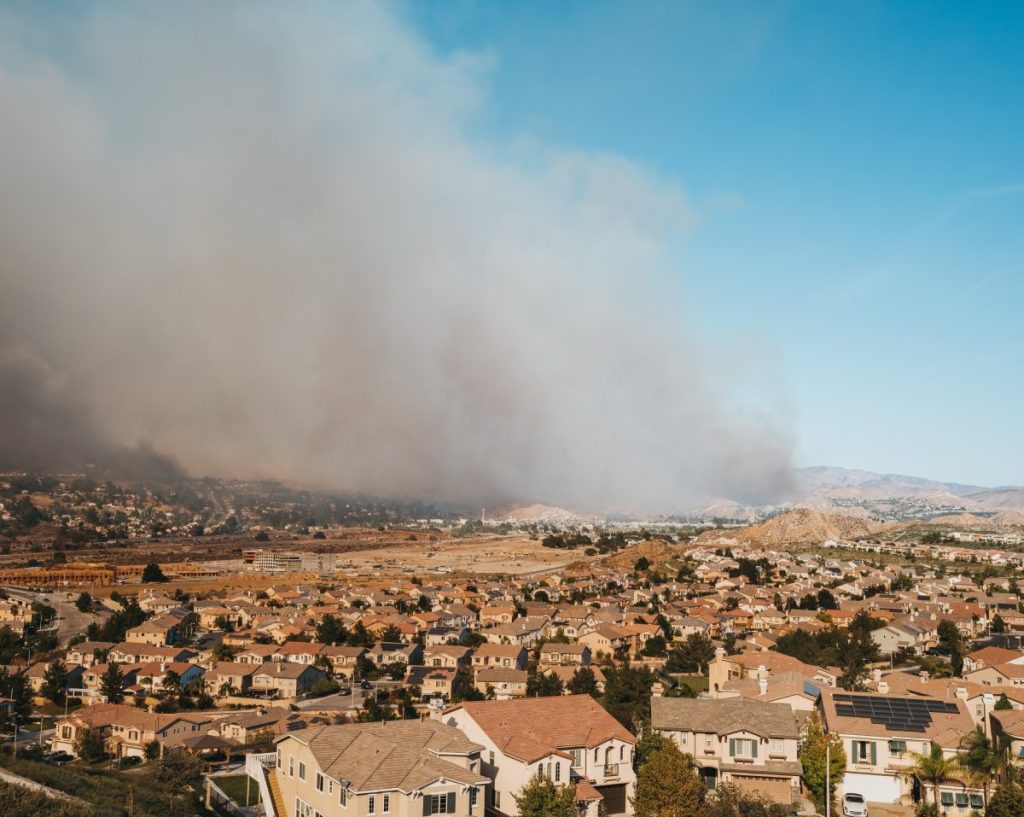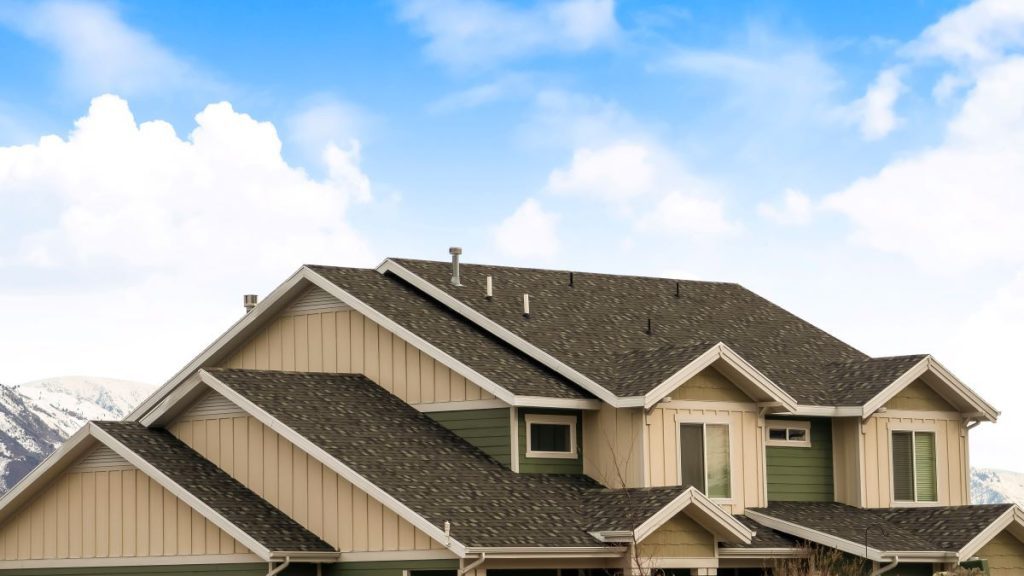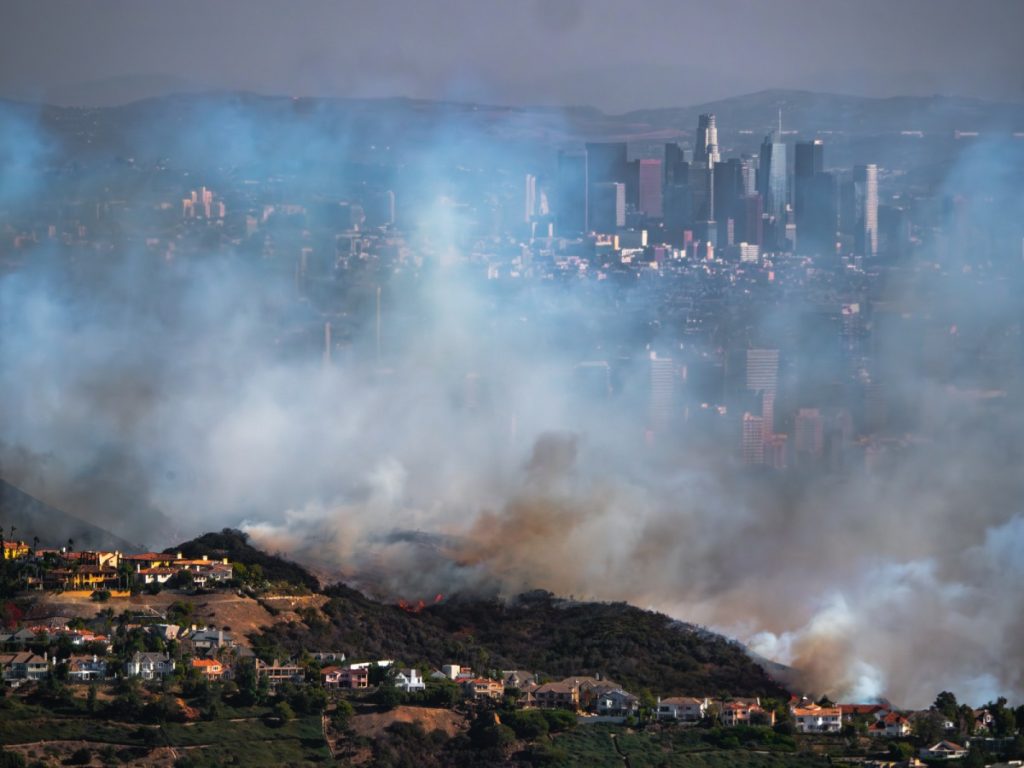Wildfire Insurance Claims in California: What’s Covered and What’s Not
No longer limited to just a particular season, wildfires in California have become a year-round threat. Fires have torn through suburban neighborhoods, commercial corridors, and high-value real estate zones once considered low-risk. For property owners and managers, this means more is at stake: more assets are exposed, more tenants and renters are displaced, and there’s more potential for loss.
As this risk landscape evolves, your understanding of wildfire insurance coverage must evolve, as well. Policies written just a few years ago may no longer provide adequate protection for the realities of today’s fires. And while most commercial and residential property policies include some form of fire coverage, the details hidden in exclusions, endorsements, and policy limits can determine whether your claim is paid in full, underpaid, or flatly denied.
In this blog post, we’ll break down what is and isn’t typically covered under wildfire insurance policies in California, with a focus on the issues that matter most to large-scale property holders. If you manage or own high-value or income-generating property, this guide will help you spot red flags before disaster strikes and understand your legal options if your insurer tries to avoid paying after it does.
Understanding Wildfire Insurance
Wildfire insurance isn’t a standalone policy you purchase off the shelf; it’s typically embedded within your property insurance policy under the broader umbrella of fire coverage. In California, most standard homeowners and commercial property insurance policies include protection against fire damage, including damage caused by wildfires. However, the scope and strength of that protection can vary significantly depending on the insurer, the property’s location, and the policy’s endorsements or exclusions.
It’s also important to distinguish between dedicated fire insurance and homeowners insurance.
- Homeowners insurance provides relatively comprehensive protection. It covers not only structural damage from a covered peril, such as wildfire, but also personal property coverage (which pays for damaged belongings like furniture or equipment) and additional living expenses (ALE), which covers costs that arise when your property is unusable, including temporary housing.
- Fire insurance, on the other hand, is more limited in scope and often used in high-risk areas where homeowners policies have been canceled or non-renewed. Fire insurance may only cover damage to the structure itself, leaving major gaps in personal property and loss-of-use coverage unless supplemented by a FAIR Plan or Difference in Conditions (DIC) policy.
What’s Covered Under Wildfire Insurance?
Understanding the specific components of wildfire insurance coverage can make the difference between a smooth claim process and a costly denial. Property insurance policies that include wildfire coverage typically pay for the following:
- Structural Damage: This includes the cost to repair or rebuild the main structure and any attached or detached buildings—garages, sheds, fences, and other improvements—up to the policy limits. For commercial properties, this may also include structural elements essential to operations, like loading docks or HVAC systems.
- Personal Property: Coverage typically extends to personal belongings within the structure, including furniture, electronics, appliances, and clothing. For businesses or income-generating properties, this may also include office equipment, tenant furnishings, or stock inventory. However, high-value items may be subject to sublimits unless specifically scheduled.
- ALE: If your property becomes uninhabitable or unusable due to wildfire damage, ALE can cover the costs of temporary housing, meals, storage, and relocation. For landlords, this may also include loss of rental income under a business interruption provision.
- Smoke Damage: Even if flames never touch the property, smoke infiltration can cause significant damage to walls, ducts, insulation, and electronics. Most policies consider smoke damage a “direct physical loss,” which means it should trigger coverage. Insurers may still push back without clear documentation, however.
While these are the most visible categories of loss, wildfire claims often involve hidden costs that catch property owners off guard. Debris removal, for example, can be both expensive and logistically complex, especially when hazardous materials are involved. Cleanup for residual soot, ash, and toxins may also require specialized remediation, which should be covered under most policies but is often contested by insurers. Knowing these nuances upfront can help ensure you’re not left paying out of pocket for cleanup after the fire trucks are gone.
What’s Not Covered by Wildfire Insurance?
While property insurance in California often includes wildfire coverage, there are critical gaps that can leave property owners exposed, especially in wildfire-prone areas.
First, damages that exceed your policy limits are not covered. If rebuilding or replacing your property costs more than the limits outlined in your insurance policy, you’re on the hook for the difference. This is particularly common when property values rise faster than coverage amounts are updated or when policyholders underestimate replacement costs.
Second, uninsured properties in high-risk zones are significantly vulnerable. In some cases, insurance companies may decline to write policies altogether in areas with repeated fire activity. This has led many owners to rely on the California FAIR Plan, which offers only bare-bones fire insurance and often requires a separate DIC policy to fill in critical gaps.
Finally, non-renewals and cancellations by providers are increasingly common in fire-prone regions. Even if you’ve had uninterrupted coverage for years, insurers may abruptly cancel or refuse to renew a policy due to updated fire risk models or reinsurance pressures. These disruptions can create dangerous lapses in protection and make it harder to pursue or fully recover future insurance claims through payouts.
Key Issues and Challenges in Wildfire Insurance Claims
In the wake of high-profile California wildfires, such as the Eaton Fire and the blazes that swept through the Pacific Palisades, property owners across the state are facing an increasingly unstable insurance market. Insurance companies are withdrawing from the state, citing climate change, increasing wildfire frequency, and unsustainable risk exposure. The result is a surge in non-renewals and skyrocketing premiums, particularly in wildfire-prone zones such as Los Angeles County and surrounding Southern California communities.
Even when property insurance is in place, policyholders often run into significant challenges when filing wildfire-related insurance claims. Denials are frequently based on ambiguous policy terms, especially vague exclusions or poorly defined coverage triggers. Many insurers also reject claims citing “lack of documentation,” even when total losses leave little left to document. The burden of proof unfairly shifts to the property owner, often immediately after a traumatic loss.
When insurance companies stall or undervalue a claim, property owners are left unable to rebuild, replace income, or resume operations. These delays aren’t just frustrating; they can cause cascading financial harm. California Insurance Commissioner Ricardo Lara has acknowledged the crisis and introduced reforms aimed at stabilizing the market; however, the reality on the ground remains challenging. For many affected by the recent LA fires, navigating the claims process has become almost as challenging as surviving the fire itself.
Steps To File a Wildfire Insurance Claim
Filing a wildfire insurance claim quickly and thoroughly can significantly improve your chances of receiving a fair payout. Here’s what to do:
- Document damages immediately: As soon as it’s safe, take detailed photos and videos of all structural damage, interior losses, and affected land. Visual evidence is crucial, especially if access to the site becomes restricted or contested.
- Notify your insurance provider promptly: Report the claim as soon as possible and review your policy to ensure you meet any time-sensitive requirements. Missing deadlines, even unintentionally, can jeopardize your ability to collect.
- Create a detailed inventory: List every personal or business item damaged or destroyed in the fire. Include purchase dates, estimated values, and receipts whenever possible. This is one of the most time-consuming steps, but it’s essential for a full recovery.
- Know your policy limits and clauses: Understand the maximum payout available under each section of your property insurance and review endorsements for additional living expenses, debris removal, or ordinance upgrades.
- Consult professionals if needed: If your claim is denied, underpaid, or delayed, consider working with a public adjuster or an experienced insurance attorney. They can help challenge improper valuations, push for faster resolutions, and ensure you’re not leaving money on the table.
Dealing with Denials and Delays
Even if you’ve done everything right, wildfire insurance claims are often denied or delayed—sometimes without a clear explanation. Understanding your rights and options is critical when this happens.
Common reasons for denials include alleged insufficient evidence of loss, failure to meet documentation requirements, or missed policy deadlines. In some cases, insurers argue that the damage wasn’t directly caused by wildfire or that exclusions apply. These justifications are often vague or selectively interpreted, especially when large payouts are involved.
Bad faith occurs when an insurer unreasonably denies or delays your claim. This can include tactics such as:
- Lowballing settlement offers
- Refusing to conduct a proper investigation
- Misrepresenting policy terms
- Intentionally stalling payments
In California, insurance companies have a legal duty to act in good faith when handling claims, and violating this duty can result in serious consequences. If you believe your insurer is acting unfairly, you have the right to appeal or escalate the issue. Start by filing a formal complaint with the California Department of Insurance, which may investigate or intervene on your behalf. Keep detailed records of all communications and documentation you’ve submitted.
If the dispute continues, it may be time to consult an attorney. A qualified property insurance lawyer can review your policy, assess whether bad faith occurred, and pursue litigation if necessary. When you’re facing hundreds of thousands—or even millions—of dollars in losses, legal action may be your best path to a fair outcome.
Preparing for Future Wildfires
If you own or manage property in California, preparing for wildfires is essential risk management. Beyond emergency planning and physical precautions, your first line of defense is a strong, up-to-date insurance policy.
Start by reviewing your insurance policies annually. Property values, construction costs, and risk classifications change year to year, especially in wildfire-prone areas. Ensure your coverage accurately reflects current rebuilding costs and accounts for any upgrades or new structures.
Understand the difference between replacement-cost coverage and actual cash value (ACV). Replacement-cost policies pay to rebuild without factoring in depreciation, while ACV coverage deducts for wear and age, leaving you with far less than what you would need to restore the property fully.
You can also take steps to reduce wildfire risk and improve insurability by clearing brush, dry vegetation, and combustible debris from around structures, installing fire-resistant roofing, siding, and ember-resistant vents, and maintaining a defensible space according to local fire code recommendations.
Finally, don’t wait for non-renewal notices to explore your options. Research alternative insurance providers, review California FAIR Plan eligibility, and consider supplemental coverage to close potential gaps. Staying proactive can be the difference between a covered loss and a financial catastrophe.
Why Choose Professional Legal Help?
Navigating wildfire insurance claims can quickly become complex, especially in high-stakes cases involving large residential or commercial properties. When insurers delay, underpay, or deny legitimate claims, having a skilled attorney on your side can make all the difference.
Property insurance attorneys with experience working on wildfire claims know how to interpret policy language, challenge lowball valuations, and build strong legal arguments grounded in both state insurance law and industry standards. They can step in when negotiations stall, escalate disputes, and, when necessary, litigate to recover the full value of your losses. Most importantly, they shift the burden off your shoulders, allowing you to focus on recovery and rebuilding.
For 40 years, Merlin Law Group has stood up for policyholders in states all across the country, from California to Florida. Our attorneys specialize in complex property insurance disputes, and we’ve helped clients recover millions in wrongfully denied or underpaid wildfire claims. We’ve represented homeowners, business owners, condo associations, even school districts and municipalities—clients who have suffered almost every catastrophe imaginable, only to find that their insurer refused to pay what they owed. If your insurer isn’t treating you fairly, we’re here to make sure they do.
FAQs About Wildfire Insurance Claims in California
Why Are Fire Insurance Companies Leaving California?
Fire insurance companies are leaving California due to a combination of escalating risks and financial pressures resulting from recent wildfires. As fires grow more frequent and destructive, especially in high-value areas, the cost of paying claims has risen dramatically, straining the insurance industry. Many providers argue that the state’s regulatory framework doesn’t allow them to adjust premiums quickly enough to match the risk, leading them to reduce exposure or exit the market entirely.
What Is the FAIR Act in California for Fire Insurance?
The California FAIR Plan is a home insurance program designed as a last resort for property owners who can’t secure coverage through the traditional insurance industry. As wildfires have made many areas uninsurable, the FAIR Plan has become a critical backstop, especially for homeowners in high-risk zones. New legislation aims to strengthen this safety net by expanding available coverage and modernizing the system, ensuring that Californians can still access basic home insurance when private carriers decline to underwrite their properties.
Does Condo Insurance Cover Wildfires?
Yes, condo insurance can cover wildfires, but how much protection you have depends on the specifics of your policy and your condo association’s master policy. Typically, the association’s master policy covers damage to the building’s exterior and common areas, while your individual condo insurance (also called an HO-6 policy) covers the interior structure (i.e., walls, fixtures, and flooring) as well as personal property and additional living expenses if your unit becomes uninhabitable.
Can I Sue My Insurance Company for a Bad Faith Denial on Wildfire Claims?
In California, insurers have a legal duty to handle claims fairly and promptly. When they violate this duty, such as by misrepresenting policy terms, failing to investigate properly, or using unreasonable tactics to avoid payment, you may have grounds for a bad faith lawsuit. These claims can result not only in recovery of the full value of your original loss, but also additional damages for emotional distress, attorney’s fees, and sometimes punitive damages designed to penalize the insurer’s misconduct. Consult with an attorney at Merlin Law for advice on whether your insurer’s delays, denials, or underpayments constitute provable bad faith.



